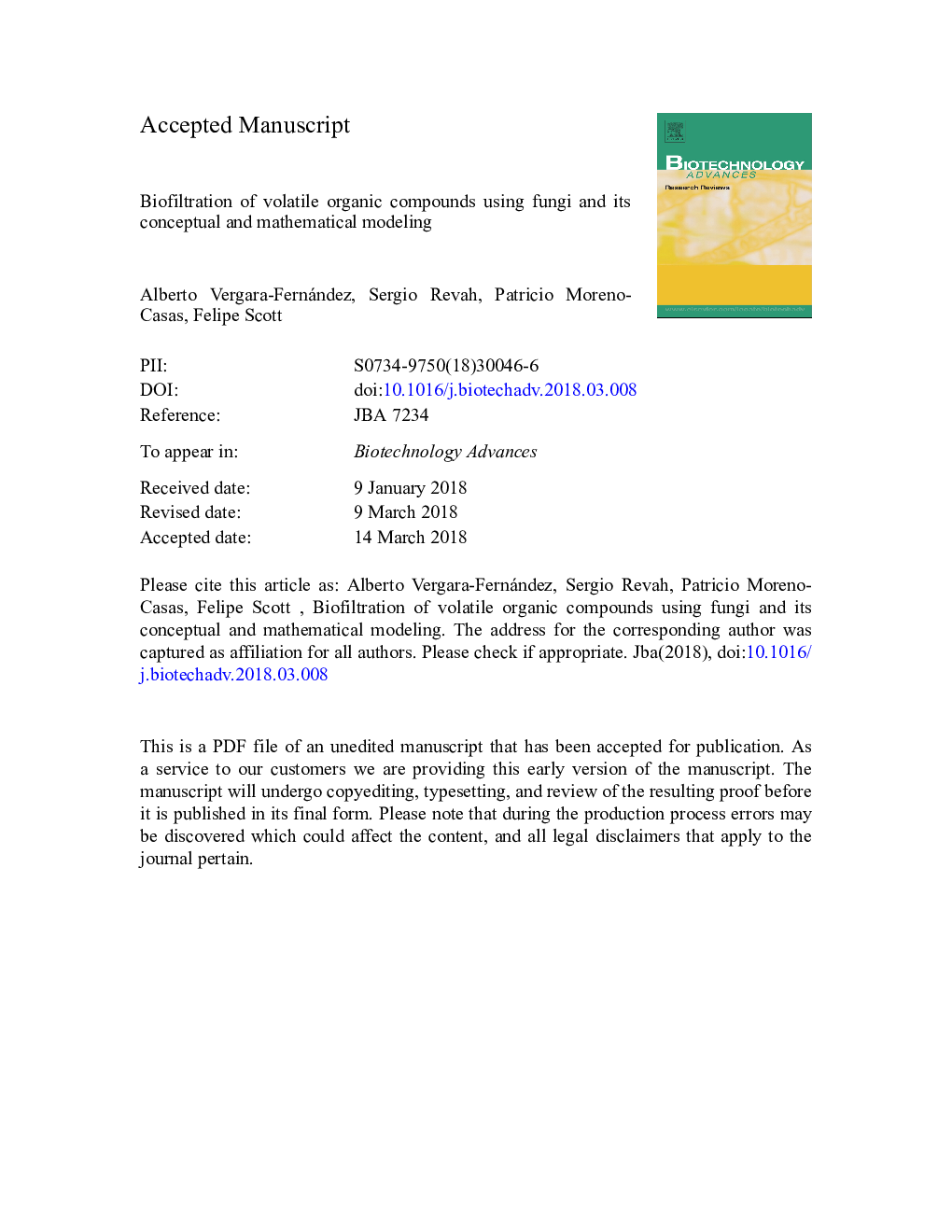| Article ID | Journal | Published Year | Pages | File Type |
|---|---|---|---|---|
| 6486586 | Biotechnology Advances | 2018 | 66 Pages |
Abstract
Volatile organic compounds (VOCs) are ubiquitous contaminants that can be found both in outdoor and indoor air, posing risks to human health and the ecosystems. The treatment of air contaminated with VOCs in low concentrations can be effectively performed using biofiltration, especially when VOCs are hydrophilic. However, the performance of biofilters inoculated with bacteria has been found to be low with sparsely water soluble molecules when compared to biofilters where fungi develop. Using conceptual and mathematical models, this review presents an overview of the physical, chemical and biological mechanisms that explain the differences in the performance of fungal and bacterial biofilters. Moreover, future research needs are proposed, with an emphasis on integrated models describing the biological and chemical reactions with the mass transfer using high-resolution descriptions of the packing material.
Related Topics
Physical Sciences and Engineering
Chemical Engineering
Bioengineering
Authors
Alberto Vergara-Fernández, Sergio Revah, Patricio Moreno-Casas, Felipe Scott,
